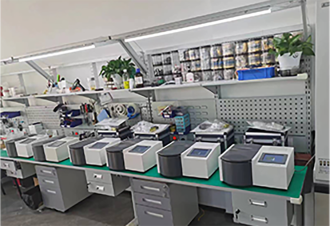 English
English



-
 Afrikaans
Afrikaans -
 Albanian
Albanian -
 Amharic
Amharic -
 Arabic
Arabic -
 Armenian
Armenian -
 Azerbaijani
Azerbaijani -
 Basque
Basque -
 Belarusian
Belarusian -
 Bengali
Bengali -
 Bosnian
Bosnian -
 Bulgarian
Bulgarian -
 Catalan
Catalan -
 Cebuano
Cebuano -
 China
China -
 China (Taiwan)
China (Taiwan) -
 Corsican
Corsican -
 Croatian
Croatian -
 Czech
Czech -
 Danish
Danish -
 Dutch
Dutch -
 English
English -
 Esperanto
Esperanto -
 Estonian
Estonian -
 Finnish
Finnish -
 French
French -
 Frisian
Frisian -
 Galician
Galician -
 Georgian
Georgian -
 German
German -
 Greek
Greek -
 Gujarati
Gujarati -
 Haitian Creole
Haitian Creole -
 hausa
hausa -
 hawaiian
hawaiian -
 Hebrew
Hebrew -
 Hindi
Hindi -
 Miao
Miao -
 Hungarian
Hungarian -
 Icelandic
Icelandic -
 igbo
igbo -
 Indonesian
Indonesian -
 irish
irish -
 Italian
Italian -
 Japanese
Japanese -
 Javanese
Javanese -
 Kannada
Kannada -
 kazakh
kazakh -
 Khmer
Khmer -
 Rwandese
Rwandese -
 Korean
Korean -
 Kurdish
Kurdish -
 Kyrgyz
Kyrgyz -
 Lao
Lao -
 Latin
Latin -
 Latvian
Latvian -
 Lithuanian
Lithuanian -
 Luxembourgish
Luxembourgish -
 Macedonian
Macedonian -
 Malgashi
Malgashi -
 Malay
Malay -
 Malayalam
Malayalam -
 Maltese
Maltese -
 Maori
Maori -
 Marathi
Marathi -
 Mongolian
Mongolian -
 Myanmar
Myanmar -
 Nepali
Nepali -
 Norwegian
Norwegian -
 Norwegian
Norwegian -
 Occitan
Occitan -
 Pashto
Pashto -
 Persian
Persian -
 Polish
Polish -
 Portuguese
Portuguese -
 Punjabi
Punjabi -
 Romanian
Romanian -
 Russian
Russian -
 Samoan
Samoan -
 Scottish Gaelic
Scottish Gaelic -
 Serbian
Serbian -
 Sesotho
Sesotho -
 Shona
Shona -
 Sindhi
Sindhi -
 Sinhala
Sinhala -
 Slovak
Slovak -
 Slovenian
Slovenian -
 Somali
Somali -
 Spanish
Spanish -
 Sundanese
Sundanese -
 Swahili
Swahili -
 Swedish
Swedish -
 Tagalog
Tagalog -
 Tajik
Tajik -
 Tamil
Tamil -
 Tatar
Tatar -
 Telugu
Telugu -
 Thai
Thai -
 Turkish
Turkish -
 Turkmen
Turkmen -
 Ukrainian
Ukrainian -
 Urdu
Urdu -
 Uighur
Uighur -
 Uzbek
Uzbek -
 Vietnamese
Vietnamese -
 Welsh
Welsh -
 Bantu
Bantu -
 Yiddish
Yiddish -
 Yoruba
Yoruba -
 Zulu
Zulu
Optimizing Karl Fischer Method for Accurate Water Content Analysis in Various Samples
The Karl Fischer Method A Comprehensive Overview
The Karl Fischer method, developed in the 1930s by the German chemist Karl Fischer, is a highly precise analytical technique used to determine the moisture content in various substances. Over the years, it has become the gold standard in many industries, including pharmaceuticals, food and beverages, petrochemicals, and polymers, owing to its accuracy and reliability.
Principle of the Karl Fischer Method
The fundamental principle of the Karl Fischer method is based on the reaction between water and iodine in the presence of a reducing agent, typically sulfur dioxide, and a base like pyridine or imidazole. The reaction is as follows
\[ \text{H}_2\text{O} + \text{I}_2 + \text{SO}_2 + \text{Base} \rightarrow \text{H}\text{I} + \text{Base} \cdot \text{H}_2\text{SO}_4 \]
In this chemical reaction, water reacts with iodine to form hydroiodic acid (HI) and sulfuric acid, effectively consuming the water present in the sample. The amount of iodine consumed directly correlates to the moisture content of the sample, making it possible to quantify the water present.
Types of Karl Fischer Titration
There are two primary types of Karl Fischer titration volumetric and coulometric.
1. Volumetric Karl Fischer Titration This method is suitable for samples with higher water content, typically more than 1%. In this technique, a known volume of reagent is added to the sample until the endpoint is reached. The endpoint is usually detected using an electrode or colorimetric indicators that signal the consumption of iodine.
karl fischer method

2. Coulometric Karl Fischer Titration This method is designed for samples with low water content, often below 1%. It involves continuously generating iodine in situ through an electrochemical reaction while the sample is introduced. The amount of current required to produce the necessary amount of iodine corresponds to the water content, making it an efficient method for trace moisture analysis.
Applications of the Karl Fischer Method
The applicability of the Karl Fischer method spans various industries. In pharmaceuticals, it is essential for ensuring the stability and efficacy of drug formulations, as excess moisture can lead to degradation. In the food industry, moisture content impacts shelf life, texture, and quality; thus, routine moisture analysis is critical. In the petrochemical sector, water content can influence product quality and processing efficiency, making Karl Fischer titration an indispensable tool.
Advantages and Limitations
The Karl Fischer method is celebrated for its high precision and ability to measure very low levels of moisture, often in the parts per million (ppm) range. It is relatively quick, with results usually available within minutes. Additionally, it can be adapted for different sample types, including solids, liquids, and gases.
However, the method is not without limitations. Sample preparation can be complex, and certain substances may interfere with the titration process, leading to inaccuracies. Moreover, the reagents used can be hazardous, requiring careful handling and storage.
Conclusion
The Karl Fischer method remains a cornerstone of moisture analysis across various industries due to its accuracy and adaptability. As technological advancements continue to evolve, enhancements in equipment and techniques promise to further optimize this established method, ensuring it meets the growing demands of quality control in an ever-changing market. Understanding and utilizing the Karl Fischer method appropriately can lead to significant benefits in product development, quality assurance, and overall operational efficiency.
-
Testing Equipment Industry Sees Major Advancements in 2025: Smart & Precision Technologies Lead the WayNewsJun.06,2025
-
Applications of Direct Current Generators in Renewable Energy SystemsNewsJun.05,2025
-
Hipot Tester Calibration and Accuracy GuidelinesNewsJun.05,2025
-
Digital Circuit Breaker Analyzer Features and BenefitsNewsJun.05,2025
-
Benefits of Real-Time Power Quality Monitoring Devices for Industrial EfficiencyNewsJun.05,2025
-
Earth Fault Loop Testing in High-Rise Building Electrical SystemsNewsJun.05,2025



